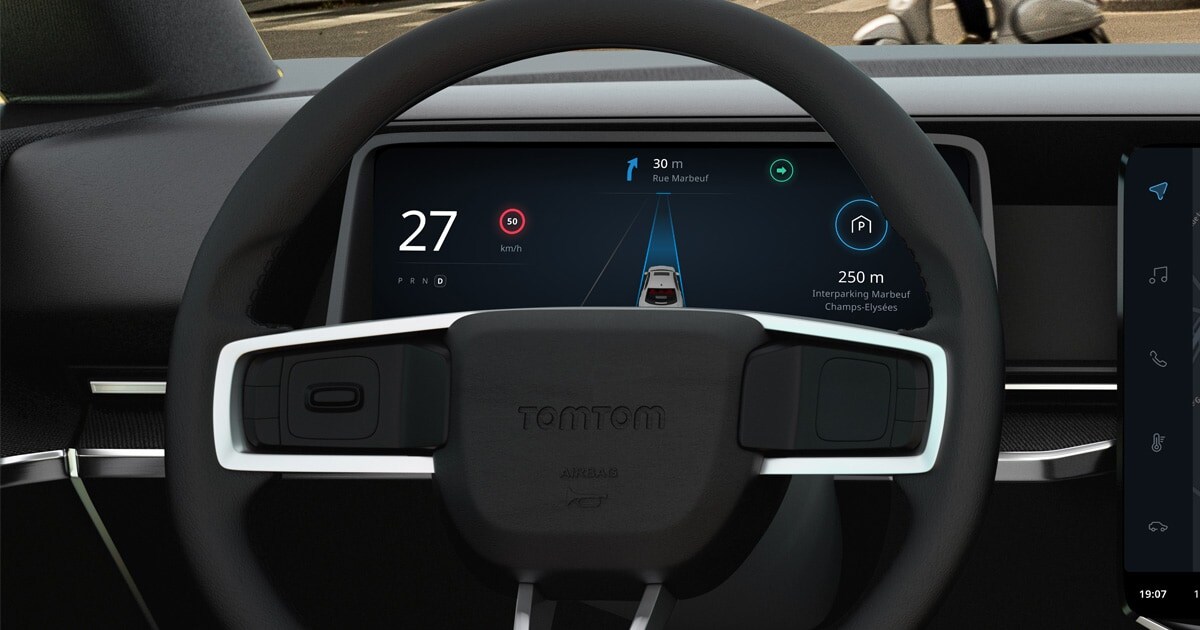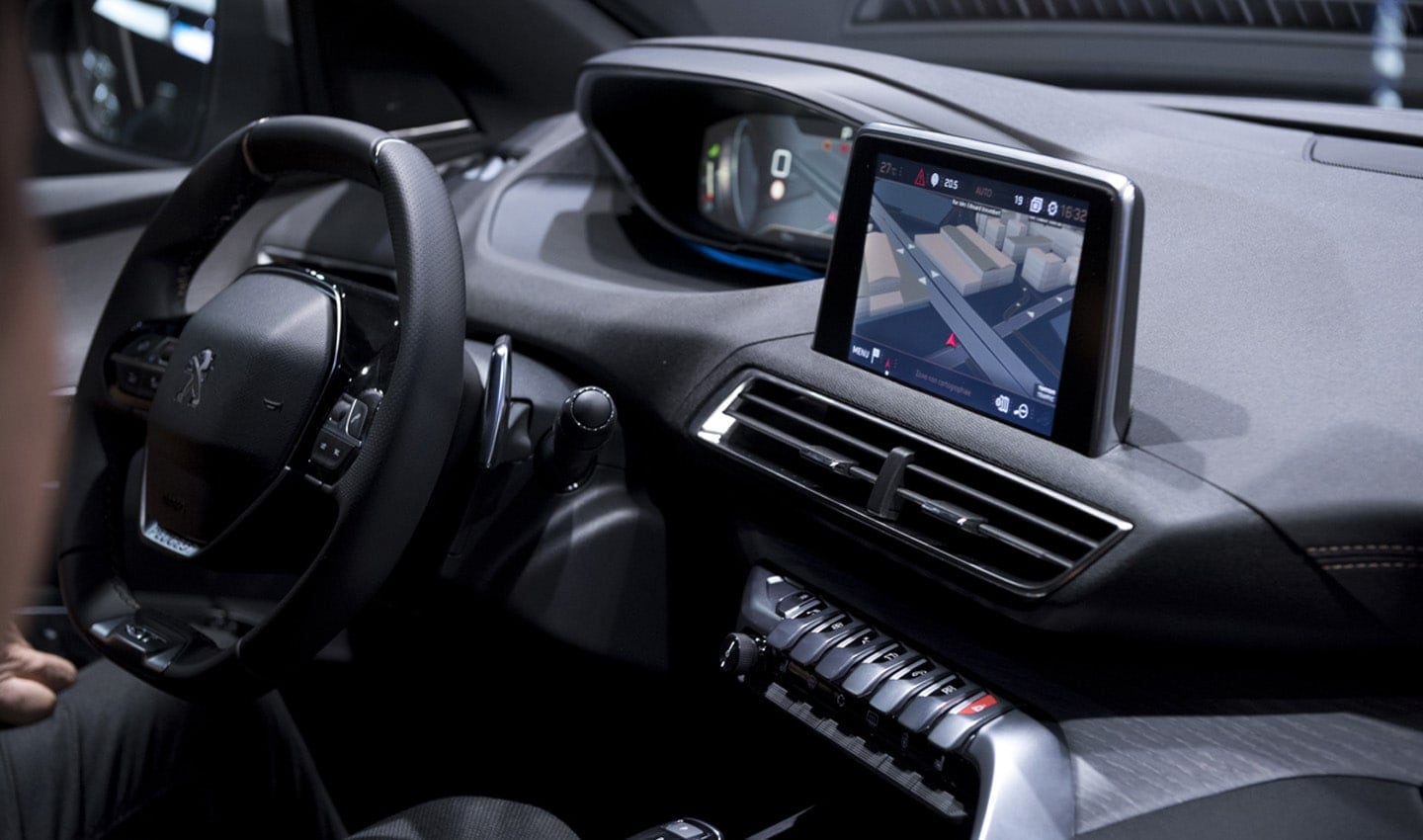
A couple of weeks ago, I stumbled across a tweet criticizing the fact that digital speedometers don’t update faster than every half a second. In this era of high-power processors and high-refresh rate, high-resolution screens, the fact that modern car speedos take a perceptible amount of time to update is, on the surface, puzzling. It’s enough to drive some people “nuts”. Clearly, carmakers could make digital speedometers that update ultra-fast, so why don’t they?
The tweet in question, which you can view here, (archived here), shows a video of the dashboard speedometer of the new BMW i4 M50 accelerating from zero to 120 kph and back down to around 100 kph.
Before we find out what’s going on, a little background. Stekkerauto, the handle of the person tweeting, might be a little biased, as they appear to be very pro-Tesla and anti-legacy auto — presumably, they consider BMW a legacy automaker. So, bear this in mind as we continue.
It’s quite clear that the numerical readout updates periodically, jumping from zero kph to four to 18 to 33 to 48, and so on. Compare this to the speed readout on a Tesla Plaid accelerating from zero to over 180 kph — here’s a good example — and it’s easy to see the difference. The Tesla speedo goes from zero to 180 kph (114 mph) and touches every single digit of speed in between. The readout is a mesmerizing blur as the car launches off the line, whereas the BMW’s is much more methodical.
From a visual point of view, watching videos on the internet, the Tesla speedo certainly gives a greater impression of acceleration.
But Stekkerauto suggests that the difference isn’t one of choice, but because “Legacy auto can’t make speedometers that update faster than ever 0.5 seconds…” I spoke to Drew Meehan, one of TomTom’s top UX designers and Marie-Anne de Vos who leads TomTom’s research on in-vehicle UX, to find out whether this is actually the case.
Some speedos are fast, others are slow. Why?
To put it bluntly, speedometers that update very fast, are constantly changing speed and update with a very high refresh rate are distracting and hard to use. Sure, they look cool in drag strip videos, but using them in the real world is quite different.
“I expect this has to do with reducing distraction and cognitive load in a glanceable display”, Meehan tells me. “If you’re staring at this speed [in the BMW], it looks like it’s refreshing slowly, but in real-world driving conditions, a glance will simply catch a single number, which is easier for our eyes and brains to process.”
In a world of congestion and traffic, drivers must keep their eyes on the road as much as possible. Because they’re hard to read, fast-updating displays could become an unnecessary distraction and lure drivers into taking their eyes off the road for too long.
What’s more, a speedo that refreshes constantly, like a video game, makes it more difficult to settle on a given speed in the blink of an eye. There’s a chance your brain would see multiple numbers simultaneously rather than catching a single number. Increasing cognitive load, it’d probably also take longer to mentally process what you’re seeing as a driver, which would further increase distraction, Meehan explains.
Deciding how a digital speedometer numerically displays the velocity isn’t rooted in the technical capabilities of a vehicle’s computers and screens but is rather based on what humans can safely process behind the wheel.
De Vos explains that this very topic is discussed at TomTom quite regularly and has been constantly on the minds of UX designers and developers since the portable navigation device (PND) days — going back some 20 years. Most recently, it came up when the company designed the interfaces for TomTom Digital Cockpit, its open in-vehicle infotainment platform.
“We asked an external company to create a prototype and in one of their first designs the refresh rate showed all the kph increases”, De Vos says. “It was quite disturbing. It becomes a sort of flicker that begs for the driver’s attention.”
In theory, carmakers could program the displays so their speedos update super-fast, but they choose not to because it’s detrimental to the driving experience.
Do we even need a speedometer?
This whole conversation got me thinking, do we even need speedometers in modern cars?
It’s possible that as intelligent speed assistance (ISA) technology becomes more prevalent — and it will, because it’s coming into full force in just a couple of months — speedometers will become irrelevant.
Think about it, one of the main uses for a speedo is to know you’re not breaking the speed limit. Imagine a world where it’s impossible to break the speed limit because your car always knows what it is and actively prevents you from doing so. With ISA tech, that future isn’t too far away.

With intelligent speed assistance tech on the horizon, the days of the speedometer might be numbered.
Of course, there are situations where we drive well under the speed limit because we don’t deem it safe. But at that point, the quantifiable speed we’re traveling at doesn’t really matter, our speed is based on our perception and judgement of hazards and danger.
I’m sure every driver has experienced a moment driving past a school when it’s time for parents to pick up their children and decided it’s best to drive slower than the speed limit.
After all, speed limits are, as the name suggests, a limit and not a target. In future, speedometers won’t be the main way we control our speed, there’ll be intelligent assistants to help with that.
What’s cool, isn’t always safe
Sure, super-high refresh rate speedometers in hyper-fast EVs are cool, and certainly add to that perception of speed. But it seems that they’re not the safest or easiest to use option. It’s not that carmakers, like BMW, can’t make fast-refresh speedos, it’s that they won’t.
Watching the speed increase from zero to 100 slowly in a tweet, is taking the tech out of context and exaggerates its perceived slowness. So, we shouldn’t be thinking of it as slow, we should be thinking of it as a deliberate UX choice.
In no circumstance should any driver on public roads put all their focus on the speedo number and accelerate hard without watching the road. So really, there doesn’t seem to be any upside to a speed readout that changes very quickly, other than it seems more modern and is cool to watch in videos.
In the real world, where safety matters, the BMW i4’s methodical speedo increase won’t be as perceptible as the video suggests. Instead, it should be an easy-to-use readout that allows drivers to keep their eyes on the road without having to battle needless distractions.
October 21, 2022, 06:30 UTC.This article has been updated to reflect the new name of TomTom’s in-vehicle infotainment platform. It is now called TomTom Digital Cockpit.People also read
)
Meet the trailblazing women that made some of the world’s most important maps
)
The future of driving is electric, here's why
)
A brief history of the cruise control system in your car
* Required field. By submitting your contact details to TomTom, you agree that we can contact you about marketing offers, newsletters, or to invite you to webinars and events. We could further personalize the content that you receive via cookies. You can unsubscribe at any time by the link included in our emails. Review our privacy policy. You can also browse our newsletter archive here.
)